#1 Swimming
Swimming is great for so many reasons! It provides sensory input in all 3 of the main areas movement in all directions (vestibular input), resistive muscle activity which provides improves body awareness (proprioception) and firm constant tactile pressure over the whole body. It is a fun social activity and important for safety as well. Be sure to take into consideration the noise level and unexpected splashing. You can talk with the pool manager and find out the calmer times to come. Often pools will have a special therapeutic swim time when the pool is warmer.
# 2 Martial Arts
If your child is having problems with self control and aggression this may seem counter intuitive. However, martial arts teaches peace and self control while giving an outlet for physical stress and aggression in a safe and controlled way. I earned my black belt in Isshinryu Karate when I was 18. All these years of teaching kids karate has helped me see first hand how much it builds self esteem in kids! Martial Arts is an individual path that lets your child go at their own pace. It is something that they will learn a tremendous amount of self control in. They will learn to control their bodies and mind. Martial Arts schools tend to embrace your child and they become part of a big family that can last a lifetime if they wish. From a sensory point of view it is fantastic! Your child will get intense input to their muscles and joints with punching, blocking and kicking exercises. There is a lot of movement in all directions and balance activities. Your child will learn how to roll with a fall and not get hurt. When learning katas (a series of movements linked together) they will improve memory and sequencing. Courtesy and respect are always emphasized. Not all martial arts instructors are created equal. It is best to observe a few classes and get the vibe of the instructor and the students and make sure that they are all kind and respectful to each other. Your child will do best with a small class size.
#3 Wrestling
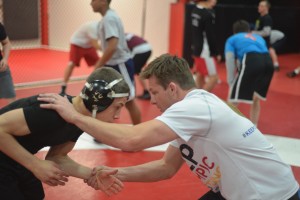
Wrestling is great because it has intense resistive muscle activity and is 1 on 1. This makes it much easier for your child to focus on the activity. In addition, there is movement in all directions and firm tactile input making this sport a winner for all 3 major sensory inputs for increasing body awareness and calming the nervous system.
#4 Gymnastics
Often parents have tried gymnastics intuitivley knowing it would be great , but then their child was not able to wait in line and listen to instructions. A great option is open gym time. Kids have the opportunity to explore equipment with supervision and they don’t have to stand and wait so much. Also consider private lessons or a smaller class size. Gymnastics is great for providing excellent sensory input to the body.
#5 Football
This one surprised me at first because I thought it would be too chaotic chasing after the ball until my friend who was a coach explained to me it all depends on the position. For example if you are a lineman you have one thing to focus on and that is the guy in front of you – block him! Turns out football is a great sport for our kids with SPD! Lots of intense input to the muscles and joints increasing (proprioception) , lots of movement in all directions and firm tactile input as well. All of this sensory input calms and organizes your child’s body helping them be successful.
#6 Yoga
In addition to providing the wonderful sensory input, yoga emphasizes relaxation and being calm. My friend Jeanette Runnings who is an OT developed a wonderful yoga activity, “Yoga Yingo“, that is easy to do with your child at home. It is basically bingo with yoga poses that are kid friendly. A lot of kids that I work with who seek intense movement do really well with inverted poses (e.g. a regular head stand or tripod head stand with knees on elbows). They are able to get intense joint compression and intense vestibular input by being upside down yet at the same time they are trying to be perfectly still and not fall over.
#7 Kayaking
Kayaking is another wonderful activity for your child to participate in. The gentle rocking on the water along with pulling the paddle against the water provides wonderful sensory input to the muscles and joint which is very calming. The life jacket provides a firm tactile pressure that is calming as well. Nature is a great source of peace and our kids with SPD need to have opportunities to be out in nature regularly. Check out your local places to rent kayaks. I was able to rent one for only $10/hr on beautiful Lake Chelan in WA this Summer and it sure beat having to haul it and carry it to the water.
#8 Hiking / Horseback Riding
So many of our kids with SPD do great with hiking and horseback riding! Again, being out in nature itself is wonderful for all the senses. Carrying a backpack adds firm tactile pressure and joint compression which tends to be calming for a lot of kids. Climbing up hill increases the resistive muscle activity providing more position sense (proprioception). There are ample opportunities for movement and balance challenges along the way from jumping off rocks to balancing on a log. On the horse there is a lot of movement input for balance reactions and your child gets to see the world from a whole new perspective up high. There are many therapeutic riding programs (also called hippo-therapy) with skilled volunteers who will either ride with your child or walk along side in order to keep your child safe.
#9 Skiing
Skiing is very rich with sensory input. Many kids with SPD thrive with skiing since they are getting such intense sensation of fast movement, balance and feedback to their muscles and joints as they shift weight to make turns. In fact many parents are puzzled why their kids are such good skiers and when I evaluate them we still see deficits with body awareness, core strength and balance. The reason is that when they are skiing the “volume gets turned up” with their body senses and they are able to know exactly where they are in space giving which increases the ability to be coordinated and balanced. Then when they are trying to sit still in a chair the “volume is turned down” and they loose their sense of body awareness and may even fall out of their chair.
#10 Dance
If your child does not have auditory issues, I think tap dancing is a wonderful source of sensory input to the muscles and joints for position sense (proprioception). There is so much feedback to every step they take. Other forms of dance would be more appropriate if your child has auditory sensitivity.
Many of these activities are also available with Special Olympics. This is a great way to make friends, get a lot of family support and be in a non judgmental environment. It is also an opportunity for your child to be with kids who have even greater challenges than they do helping your child have balance and perspective in their life.
Mary Kostka is a Pediatric Occupational Therapist specializing in Sensory Processing Disorder at her private practice, ‘Ohana Occupational Therapy, LLC, in Wenatchee and Leavenworth Washington.
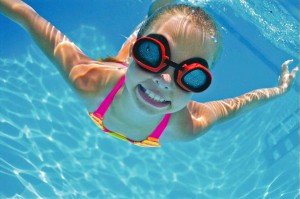
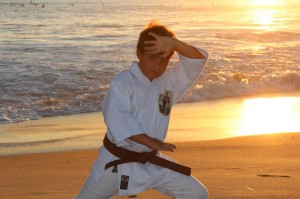
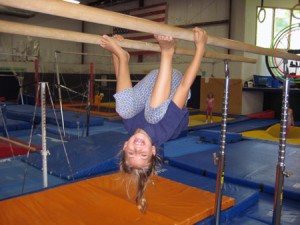


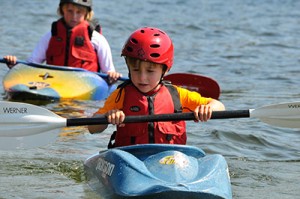
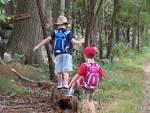
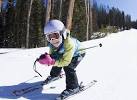



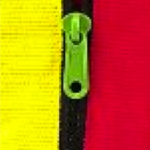

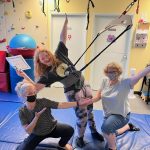
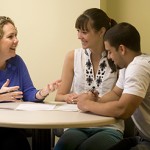
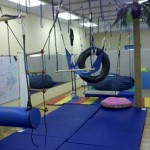
Hello
I have a question regarding the martial arts aspect ..my son has a definite need for the “push/pull/heavy work” type of sensory and we are looking into martial arts as a good outlet for him to use these in..my question is that when you say martial arts it is such a broad array of choices .. I have had a few friends and family members who are both in martial arts recommend making distinctions as to which school to choose for our son ahd they recommended specify jui jitsu as opposed Judo or Tae Kwon do as jui jitsu allows more of a physical push pulling wrestling style where as the other two are more of a “don’t touch me or I will resist” type of schooling ..I was wondering if you have any thoughts on this and if you would say that in fact all of the types of martial arts would be good and that it doesn’t have to be “one or the other” for the sensory child?
Hello, there are so many different types. The best thing to do is to go and observe and see what the teacher is like and what the style is like. You will be able to have a feeling of what is right just by observing, Mary
Do you have any suggestions for a kid with spd participating in football when the whistle is too much for them?
Hi, try custom ear plugs with volume control made from an audiologist
Thank you Ms. Kostka for this article. I have begun to feel lost and overwhelmed with my ADHD son . I know he’s smart. But he has such difficulty with focus. I don’t want him to fall behind. I will try karate for him. Thank you again for this. I look forward to more research.
Thank you so much. Great to know
My daughter has SPD and I am interested in anything that would help make her our life easier.
How can we help?